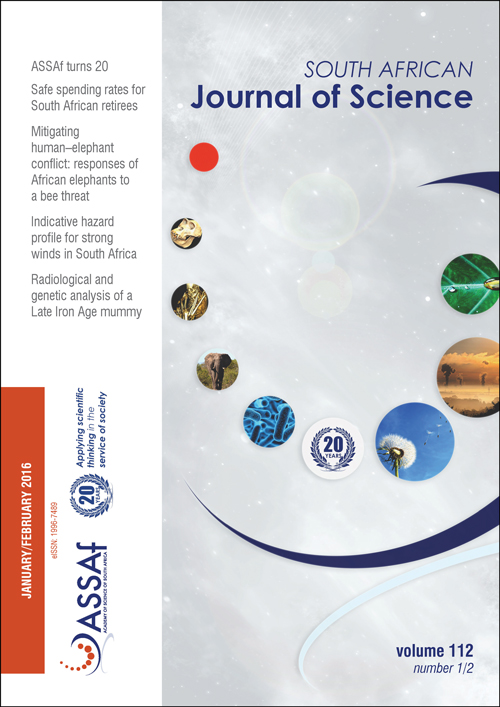Indicative hazard profile for strong winds in South Africa
DOI:
https://doi.org/10.17159/sajs.2016/20150094Keywords:
wind hazard, disaster management, strong wind mechanisms, seasonal windsAbstract
While various extreme wind studies have been undertaken for South Africa for the purpose of, amongst others, developing strong wind statistics, disaster models for the built environment and estimations of tornado risk, a general analysis of the strong wind hazard in South Africa according to the requirements of the National Disaster Management Centre is needed. The purpose of the research was to develop a national profile of the wind hazard in the country for eventual input into a national indicative risk and vulnerability profile. An analysis was undertaken with data from the South African Weather Service’s long-term weather stations to quantify the wind hazard on a municipal scale, taking into account that there are more than 220 municipalities in South Africa. South Africa is influenced by various strong wind mechanisms occurring at various spatial and temporal scales. This influence is reflected in the results of the analyses which indicated that the wind hazard across South Africa is highly variable, spatially and seasonally. A general result was that the strong wind hazard is highest from the southwestern Cape towards the central and eastern parts of the Northern Cape Province, and the southeastern parts of the coast as well as the eastern interior of the Eastern Cape Province. On a seasonal basis, the southern parts of the country showed similar magnitudes of relative wind hazard throughout the year. However, further north, a strong seasonal component was evident, with lowest risk of strong winds during autumn and winter, and highest risk in spring and summer when convective activity is strongest.
Published
Issue
Section
License

This work is licensed under a Creative Commons Attribution 4.0 International License.

All articles are published under a Creative Commons Attribution 4.0 International Licence
Copyright is retained by the authors. Readers are welcome to reproduce, share and adapt the content without permission provided the source is attributed.
Disclaimer: The publisher and editors accept no responsibility for statements made by the authors
How to Cite
- Abstract 425
- PDF 1941
- EPUB 190
- XML 216












.png)